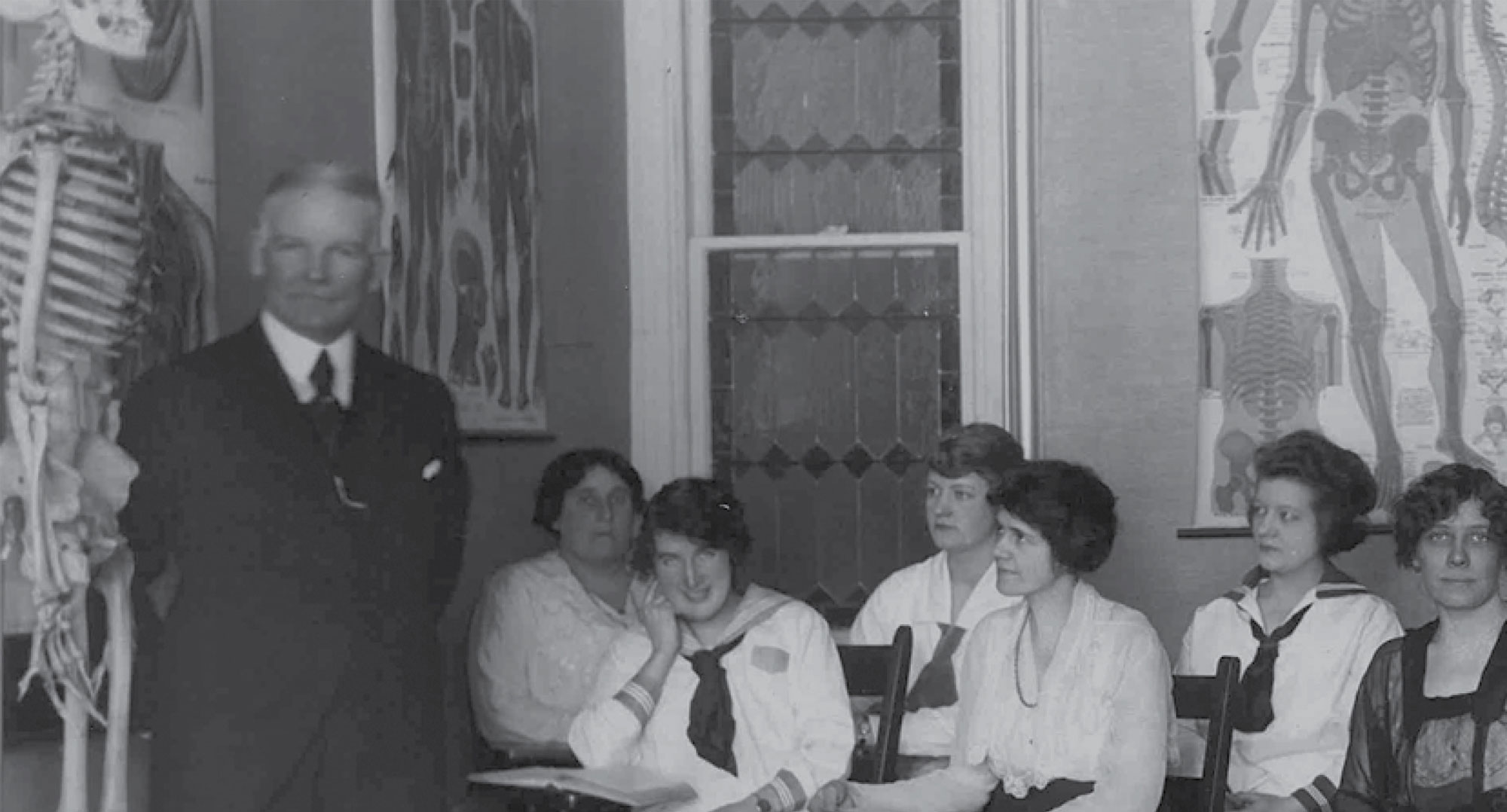Over a Century of Experience
Since 1916, Swedish Institute has focused on delivering quality education and training for graduates to pursue their passion. Not only was the school an early pioneer in offering massage therapy training, but it was also a pivotal advocate for shaping the massage therapy industry we know today. Throughout its history, Swedish Institute has always maintained its dedication to providing hands-on training, innovative learning, and program offerings designed to meet the needs of market demand. The school has graduated thousands of students who have gone on to work in many healthcare realms, and who in turn have provided health-enhancing and healing treatments to countless clients and patients across the globe.
Follow the timeline below to see how Swedish Institute has evolved in the last 100 years!
- 1916: The school was founded by Captain Theodore A. Melander of Stockholm, Sweden, as the Swedish Gymnastic Institute in New York City. The school focused on “Medical Gymnastics and Massage.”
- 1922: NY Giants pitcher J.W. Scott attributed his success in the World Series to the treatment he received from the Institute, thus elevating the Institute’s presence in the sports industry. In later years, graduates would go on to incorporate their skills and techniques at sports teams such as the New York Yankees.
- 1926: School ownership moved to graduate and dean Lillian F. Phillips. She would go on to direct the school for 40 years.
- 1940s-50s: As the education requirements for physiotherapy evolved and the healthcare system began to integrate physical therapy, the employment opportunities for massage therapy graduates began to shift from providing care in hospitals to private practices, gyms, and health clubs. The Institute changed its name to School for Massage and Allied Subjects.
- 1967: Patricia J. Eckardt, the niece of Lillian Phillips, assumed ownership and leadership of the school. Eckardt was instrumental in lobbying state officials and advancing legislation that ultimately brought greater legitimacy and respect to the profession. This year, massage became a licensed profession in New York State. Swedish Institute was reclassified as a professional school.
- 1981: Swedish Institute became the first massage school in the U.S. to be granted national accreditation by the accrediting body now known as the Accrediting Commission of Career Schools and Colleges (ACCSC).
- 1983: The school opened the PH Ling Clinic, the first student massage clinic in the U.S. This advancement provided students with a supervised clinical experience treating patients while offering affordable access to massage therapy to the public.
- 1984: The school added Eastern Massage training and Shiatsu to its curriculum to keep up with the growing demand for more holistic training methods.
- 1990: The profession’s lobbying efforts succeeded again, as the New York State finally recognized the term Massage Therapy, and the title Massage Therapist replaced the titles Masseur and Masseuse. The initials LMT (Licensed Medical Therapist) became the credentials that demonstrated licensure in Massage Therapy.
- 1992: Paula Eckardt became the president and leader of the school. The Massage Therapy program was expanded in sync with the dramatically changing profession, incorporating courses in Sports Massage, Trigger Point Therapy, Myofascial Release, Reflexology, and Clinical Strategies.
- 2000: The school began offering an Associate in Occupational Studies degree program in Massage Therapy.
- 2001: In response to the tragic events of 9/11, the school mobilized over 1,400 graduates to provide massage therapy and acupuncture treatments to over 50 different sites, including firehouses, police stations, and Ground Zero.
- 2004: The school developed a certificate program in Personal Training.
- 2011: The school begins expanding program offerings to include several additional healthcare professional training programs.
- 2015: The school introduced the iPad® Program, which provides engaging digital course materials and innovative ways for students and instructors to interact, learn, and stay connected.
- Today: After over 100 years, Swedish Institute is still a vibrant and diverse learning center. Our current programs range from the holistic to the conventional realms of modern healthcare. We continue to provide practical training and guidance to help our students succeed in and out of the classroom.

